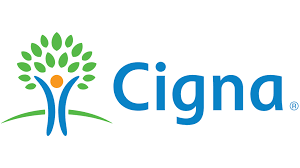Another week, another Adams v. Goliath story in the world of ERISA litigation—and this time, Goliath is Cigna. The company is now facing its second lawsuit in as many months over how it handled forfeitures in its $13 billion 401(k) plan. If you’re a fiduciary—or advise one—pay attention. These cases may seem like déjà vu, but they’re sending a very loud and clear message: the era of sloppy fiduciary oversight is over.
Let’s break this one down.
Three former Cigna employees are alleging that the company misused over $17 million in forfeited 401(k) assets to offset its own matching contribution obligations. The plaintiffs claim this violated ERISA’s fiduciary duties and self-dealing prohibitions. Their logic? Once the money leaves a non-vested employee’s account and hits the plan’s forfeiture bucket, it becomes plan money, and should be used for plan purposes—like paying for administrative expenses or reallocating to participants—not for helping the company’s bottom line.
Cigna, of course, disagrees. They’ve said they’ll “defend the company vigorously,” which is corporate PR speak for “this is going to be expensive.”
But here’s the kicker: the IRS has said that using forfeitures to reduce employer contributions is legal, within certain limits. In fact, that was reaffirmed in 2023. So why all the lawsuits? Because legality under the Tax Code isn’t the same thing as prudence under ERISA’s fiduciary standards. If a plan document says forfeitures should be used a certain way, or if the fiduciaries never even considered using them to reduce fees for participants, then they’re vulnerable—no matter what the IRS says.
Let’s not forget: this is the second lawsuit Cigna has faced recently. The other alleges they kept participant assets in underperforming stable value options and again misused forfeitures. Where there’s smoke, there’s often a fiduciary committee that hasn’t read its plan document in a while.
A few takeaways for plan sponsors and advisors:
1. Forfeitures are not free money. They’re plan assets. Treat them with the same care as participant contributions.
2. Document your decision-making. If you’re using forfeitures to offset contributions, make sure the plan permits it, and document why you chose that route over other alternatives.
3. Read your plan document. I shouldn’t have to say this, but clearly, some committees aren’t doing it.
4. Benchmark everything. Fees, investments, processes—even how you handle forfeitures.
With over 93,000 participants and $13 billion in plan assets, Cigna’s plan isn’t just a retirement vehicle—it’s a litigation magnet. But the lessons apply just as well to the $10 million plan down the street. ERISA doesn’t care about your size—it cares about your process.
And if your process stinks? The plaintiffs’ bar is more than happy to help you improve it—at a steep cost.
As always, don’t let litigation be your wake-up call. Be proactive. Be prudent. Be a fiduciary.







